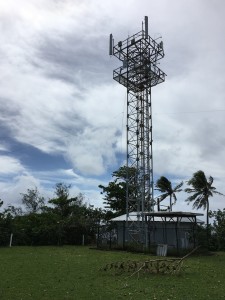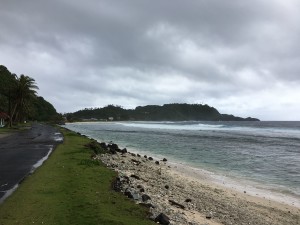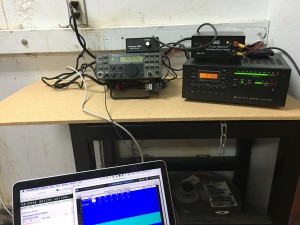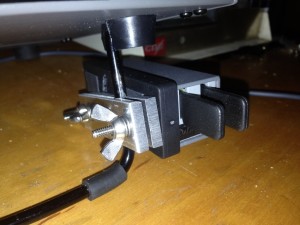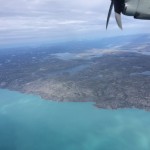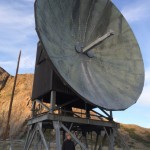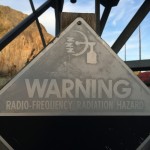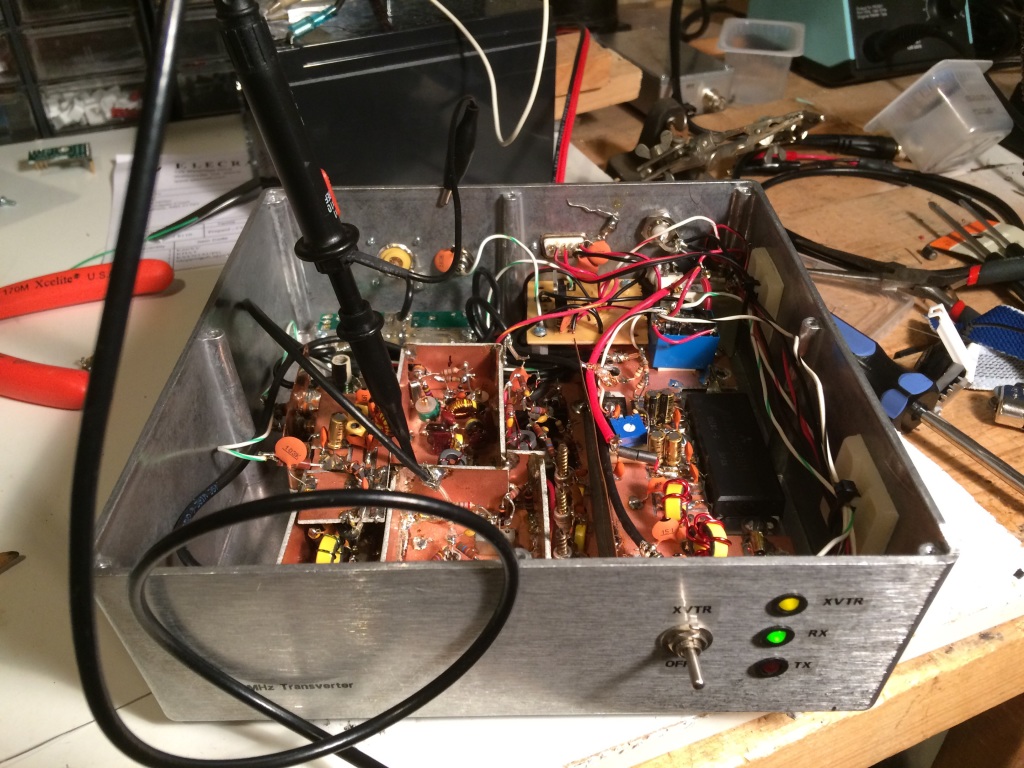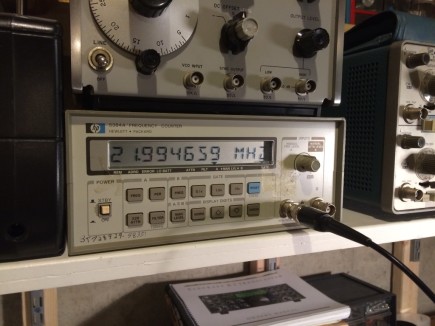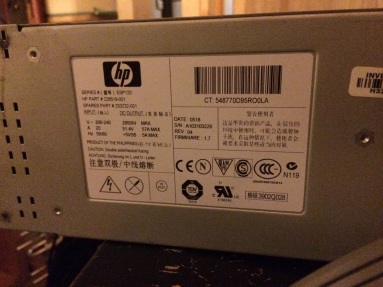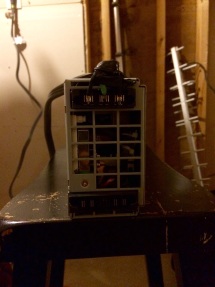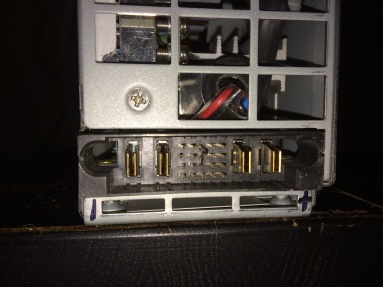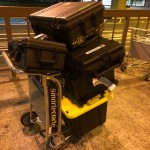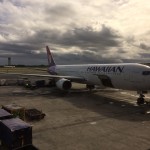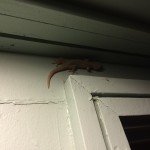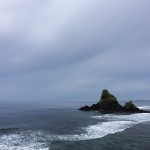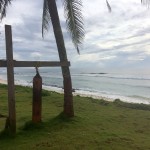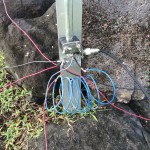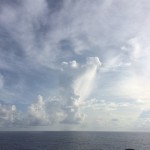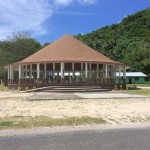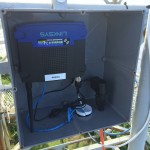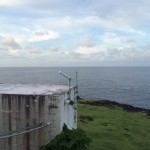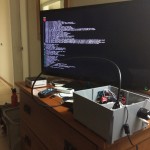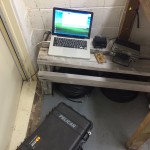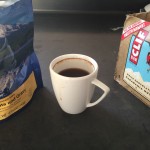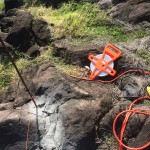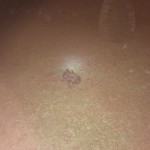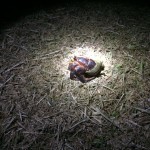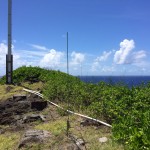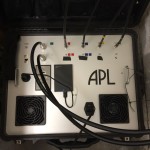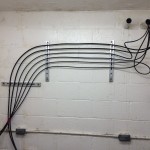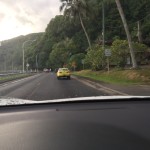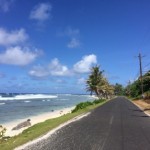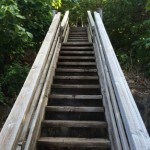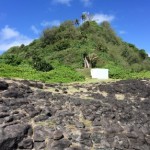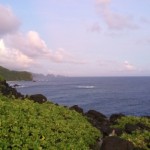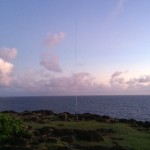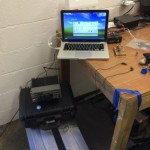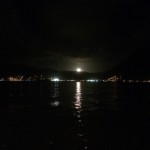I had originally planned to make a maintenance and upgrade visit to my instrumentation in American Samoa in February 2016. There are lots of advantages to February: It’s cold here in W3, the ARRL DX CW contest is in February, and the phenomenon I’m studying is most active during the equinoxes. I scheduled a 7-day trip that ended with the weekend of ARRL DX so I had the opportunity work through the weekend or play some radio if work went better than expected.
My flight had been booked out of Washington National (DCA) airport at 5:15 am Monday morning, which is the best possible time of day at the worst possible airport. A snowstorm of unknown magnitude was bearing down on the mid-Atlantic. And, around 4:00 pm on Sunday afternoon, I fell asleep on the couch. When I awoke 90 minutes later, it rapidly became clear that I had a nasty stomach flu. As my condition deteriorated further, I finally decided I didn’t want to be fighting that for the next 24 hours on 767s on my way to a foreign place where I wasn’t sure what kind of medical facilities I could access. I cancelled the trip and spent the next 24 hours in bed instead.
The trip was rescheduled for three weeks later in March and I managed to get this itinerary out of BWI, which is much more convenient. I loaded up my gear and went to the airport at 4:00 am. My upgrade had cleared so I didn’t pay excess on my overweight and extra Pelican cases. Hurray for small victories! We sat at the end of the runway on the tarmac doing the preflight checks and the cabin lights started flickering intermittently. And we sat, and we sat. And, we returned to the gate and sat some more. I nervously refreshed the ETA on my phone finally watching the arrival in PHX slip past the departure to HNL. I deplaned.
The agents tried to convince me that I could “just take the flight to Honolulu tomorrow.” With some effort, I communicated to them that the HNL-PPG (Sa’moa) leg of my journey only goes on Mondays and Fridays and that I would rather be stuck at home for a week rather than a week in Honolulu. So, I cancelled the trip for a second time. My bags went to PHX and were delivered to my house the next day. I rescheduled the trip for late April with a night in Honolulu on the outbound leg to avoid this bit of bad luck happening twice.
Two days before I left, my local contact called me on the phone to tell me that Tropical Cyclone Amos was bearing down on the island. Fortunately, the hurricane dumped some rain and brought some winds but passed to the north of island. The April trip went off without a hitch, although it was scheduled for four days (Monday night – Friday night) instead of the original seven. So, I was hustling to get my work done and find time for radio.
I was vaguely aware that KC0W is also in KH8, but given my historical bad luck with this particular visit, I didn’t reach out to him. In fact, he’s the one that contacted me once I arrived. We met for breakfast at the McDonald’s in Tafuna one morning and had a nice long ragchew about radio and travel. Typical hams. I decided to focus on bands (especially 160) that Tom wasn’t on given my limited time on the island.
Fortunately, I had access to this mobile phone tower, which I use for my wireless networking for instruments as well. So, I climbed up to check on the network equipment and put a pulley on the tower so I could raise and lower ham antennas safely after-hours when no one was around.
The tower is on the top of Cape Matatula, which sticks out of the northeast corner of Tutuila island. It’s the bit of land jutting out in the middle of the photo below. If you open the full-size photo, you can see the tower just at the edge of a rather precipitous drop-off toward the rocky shore about 1/3 of the way from the right-hand side of the frame. Needless to say, it’s a great QTH with 270 degrees of saltwater view as I’ve mentioned before. At sunrise and sunset, the middle and higher bands are open to EU, JA, and NA/SA all at once. The pileups are thrilling but very challenging.
Here’s the radio setup from this trip: K2/100, KPA500, WKUSB, and TRLinux running under VirtualBox on my Mac. This worked OK, but the WKUSB would drop out every few QSOs and needed to be completely rebooted which meant that I had to unplug the USB cable and restart TRLinux. Obviously, this worked when I tested it at home but I was not stressing it like I was in the field. I’m not sure whether it was an RF issue or software/hardware. In any case, I will probably be installing another Windows VM like I’ve used previously.
I only ended up making about 400 QSOs on this trip, which is way down from the approximately 3000 QSOs I made over the past two trips. The combination of aggressive work schedule, glitchy keying, and poor 160-meter conditions (too late in the season, but I made a few guys happy), made it hard to get excited about operating a lot. Furthermore, my operating position was located in a room with an air compressor nearby that would kick on every few minutes. Even with the excellent Etymotic MC5 earbuds, it was still loud. Enough complaining! There will be at least one more trip out there under my present project and if KC0W hasn’t worked everybody, I’ll be there to give you all new counters again. I just uploaded the log to LoTW before I posted this blog entry. I have not responded to any direct QSL cards yet.
